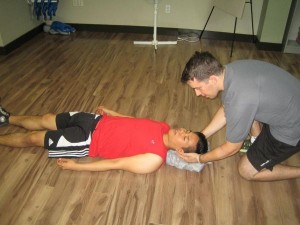What is triage? Why do first aiders need to know triage? Read further and learn how triage can help first aiders respond in multiple-casualty situations.
In basic first aid training, you have been taught to give care to injured and sick persons one at a time. This is done to prevent cross contamination and to ensure proper assessment and treatment. However, there are emergency situations that involve multiple casualties at the same time. This may be due to a vehicular accident involving large passenger vehicles (buses or carriers), a plane crash, a fire or explosion, natural disasters, and many other incidents. In all these situations, many people can be injured simultaneously and require treatment. And in times such as these, the limited resources of the local EMS system may not be enough for all casualties. What you do initially can have a huge impact on how many lives can be given life-saving care.

In order to maximize the limited resources of the EMS and to provide the greatest chance of survival to the largest number of people, triaging is done. Triage is a French term that literally means “to sort.” In the medical field, triage refers to the system used by emergency service personnel to prioritize casualties, based on the severity of injury or illness.
It is most commonly used in multiple-casualty situations or disasters, or any emergency situations involving illness or injury that taxes the limited EMS resources. Triaging is done in both out-of-hospital and in-hospital emergencies. EMTs, paramedics, emergency physicians and nurses are taught triaging. Modules about triage are also included in advanced first aid training courses.
The first ambulance or EMS team to arrive at the scene of accident becomes the initial command post for all other rescuers. This team is also given the most important task of all, which is to immediately sort out and prioritize the casualties
(triage). The triage officer will need to quickly but thoroughly assess all the casualties and assign their degree of priority. The most commonly used is the four-category system. In this system, casualties are ranked by priority: Number 1 for high priority, Number 2 for second priority, Number 3 for lowest priority, and Number 4 for death. Color tags are also used for quick identification of casualties.
As a trained first aider and a member of the rescue team, you have to coordinate with the triage officer. You should start providing care for those with highest priority then move down the prioritization. By following this prioritization, life-saving care is rendered to those who need them most.
